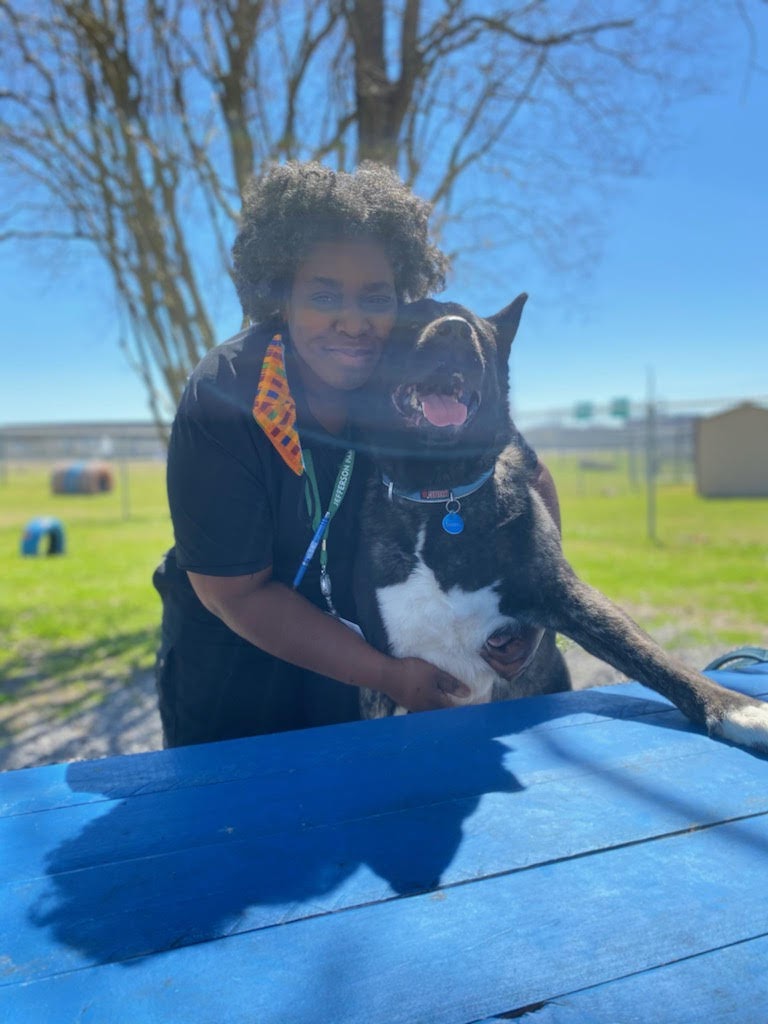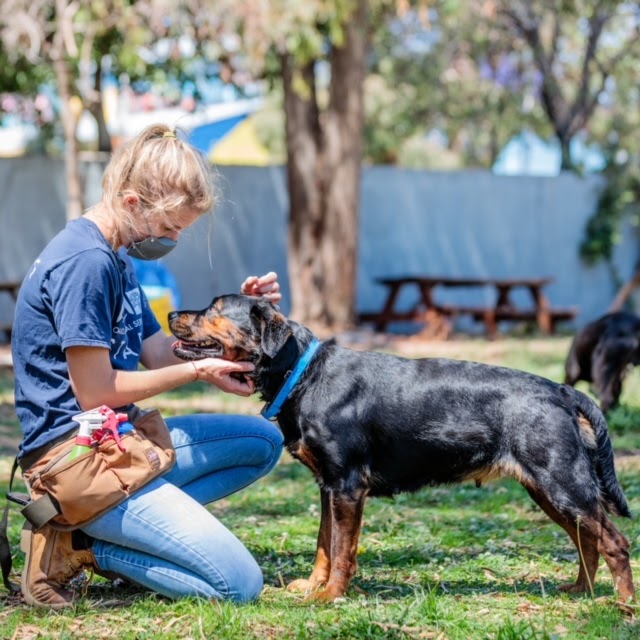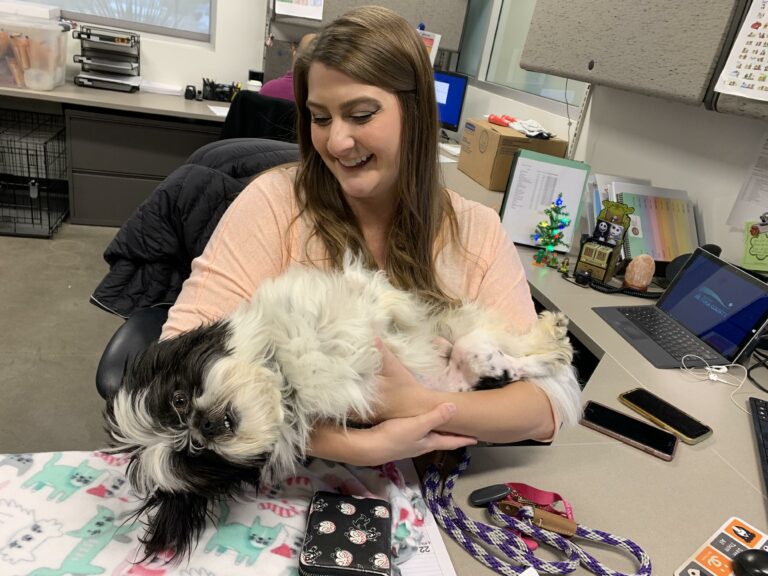This piece is part of HASS’s new Voices of Shelter Workers initiative. Please tell us what other stories or features you’d like to see, or participate in. Reach out here, or post on our Facebook page, and tell us what’s on your mind.
On the day we spoke with Jennifer Jenkins, shelter manager for Jefferson Protection and Animal Welfare Services-Eastbank location, an open-admission government shelter in Louisiana, one of the shelter’s kennel technicians hadn’t shown up for work. Jennifer wasn’t surprised.
“He quit, basically. I know it was because of burnout. We’re super full and we’re very short-staffed right now,” she said. “Right now, we’re all experiencing it. We’re just, everybody’s tired, everybody’s burned out. It almost doesn’t seem like there is relief.”

This probably sounds, and feels, familiar. After last year’s COVID-related lull, this summer animal shelters all over the country are full again—and it’s not just the animals who are at risk. The people whose job it is to care for the animals under these extreme conditions are suffering, too.
“It’s everyone,” said Ally Sivalls, behavior manager for ACCT Philly, Philadelphia’s largest open intake shelter and only animal care and control provider. “This is what it’s like in animal sheltering right now.”

Burnout, sometimes known as compassion fatigue, is a mental and physical state of exhaustion. It can come on when a person is exposed to unrelenting stress, especially when they don’t see—or feel—the prospect of it easing.
Compassion fatigue specialist Julie Squires says “anyone in a helping profession” is vulnerable, “and animal welfare workers certainly are vulnerable due to the repeated exposure to pain and suffering they witness in the animals, the humans surrendering them, and their co-workers.”
Indeed, full shelters are just one piece of the stress. Human factors are another. One worker at a large municipal shelter described, for example, people becoming upset when asked to hold onto a lost pet instead of giving them over to the shelter—one of many programs and strategies shelters are employing to try to keep a check on how many animals are coming into the shelter.
“We are trying to limit our intakes to emergency only as much as possible, but then that has the double-edged sword,” this worker said. “Yes, we’re not taking the animal in right this second, but then you’ve got the upset person that found the animal that doesn’t want to take it home either.”
With the shelters’ population increasing, so does the animals’ stress. Their stress exacerbates the workers’ stress, too. Which then leads to staffing shortages, as exhausted workers call out sick or even quit. Which leads to more work for the remaining staff. Which leads to even more stress.
“It absolutely sucks,” this shelter worker put it bluntly. After taking a road trip about a month ago with their kids and personal dogs, upon getting back they found the stress levels among people and animals had risen, and spread. “When I was walking through the kennels, I was just thinking, I don’t know how much longer I can keep doing this.”
So what can be done, so that shelter workers don’t burn out—so they can keep doing this?
If there are no easy fix-its, a very simple thing not to do is deny that compassion fatigue or burnout exists. One longtime animal shelter worker described a former boss who took that harmful tack.
“We can’t address the issue of compassion fatigue if we pretend it doesn’t exist, and force staff to suffer alone,” this person said in an email. “I don’t have all the answers, but recognizing and validating these experiences are the bare minimum.”
On the proactive side, Julie Squires recommends practicing self-care, getting support from a coach or therapist, looking for ways to delegate, learning relaxation, and even to “get out in nature.”
Jennifer, too, suggests exercise, nature, and even television (Schitt’s Creek and Dr. Who are two favorites). Using paid time off, as well, if you have it—and actually making sure coworkers know you are not available while you are out.
“Those animals, they will be there. The place will be there. It is not going to burn down while you’re gone,” she said. “There is a team of people. You have to have faith in your people.”
One thing that helps Ally and her coworkers is as simple as being able to take an hour off lunch when needed; the combination of the break, and feeling a semblance of some control.
That, and looking toward the future, with hope.
“To some extent, I do think that it takes a certain amount of understanding this is a hard time, but we’re going to get through it,” Ally said.
If things follow their usual cycle, when the fall comes the shelters will slow down.
The HASS elements keeping pets out of shelters, further has the potential to reduce burnout, in the summers and years to come. More fosters. More lost pets being returned to their owners, instead of impounded. More surrender prevention programs. Fewer barriers to adoption, and more animals being welcomed into loving homes.
“All of the good things that progressive animal sheltering is moving towards,” Ally said. “Looking forward and hoping for the best. It’s hard on some days, but I think that it’s doable.”
“That is actually accurate,” said Jennifer. “If you can find ways to get animals out and to keep them out of the shelter, then that helps everybody. That helps your staff, it helps so they don’t feel like there’s pressure and frustration and everything, and it helps the animals too.”
That day, Jennifer was anticipating being able to get some dogs onto a transport truck, heading up north to a shelter that isn’t overcrowded, where they can get adopted. She thought they might take 30 of her dogs. She was going to try to get 60 dogs on the truck.
In the end, the truck took 14, including one named Phoebe she’d been especially worried about. “But we’re working on another one and hope to get more dogs out,” Jennifer said.






